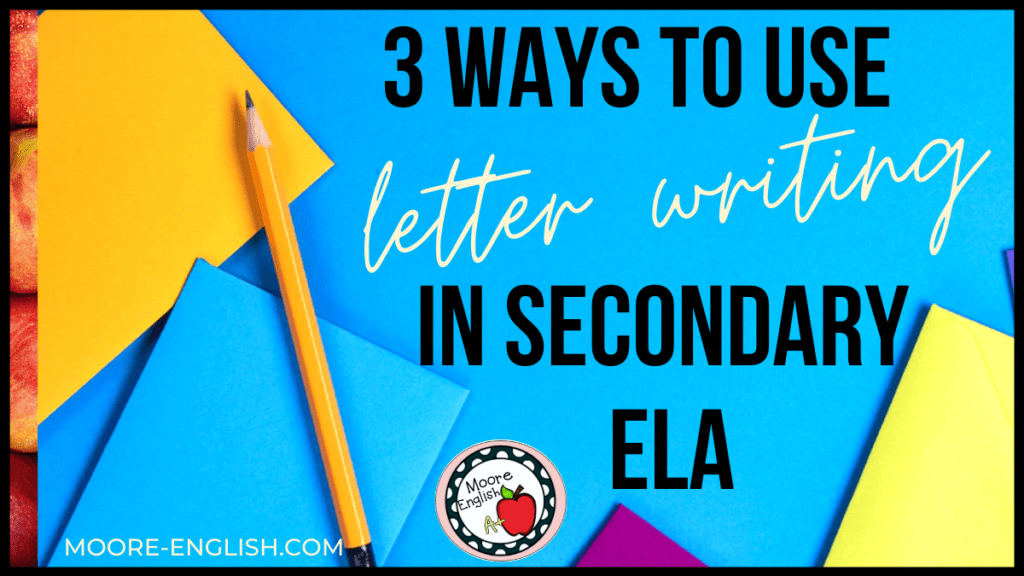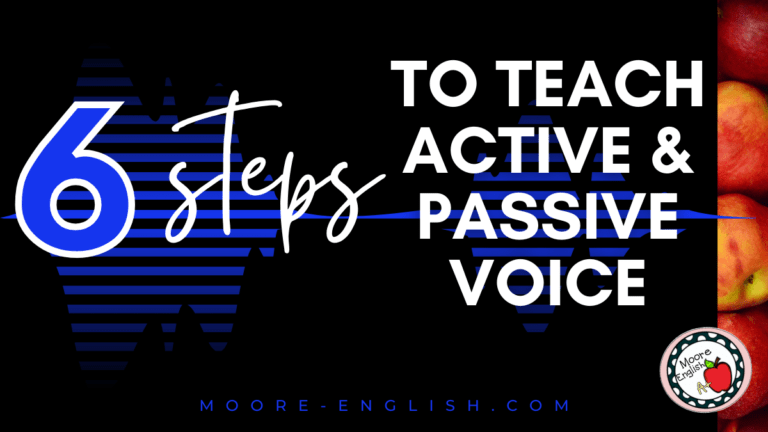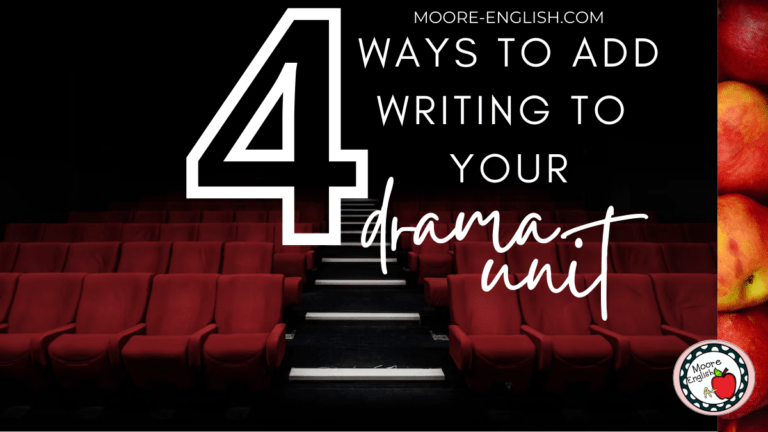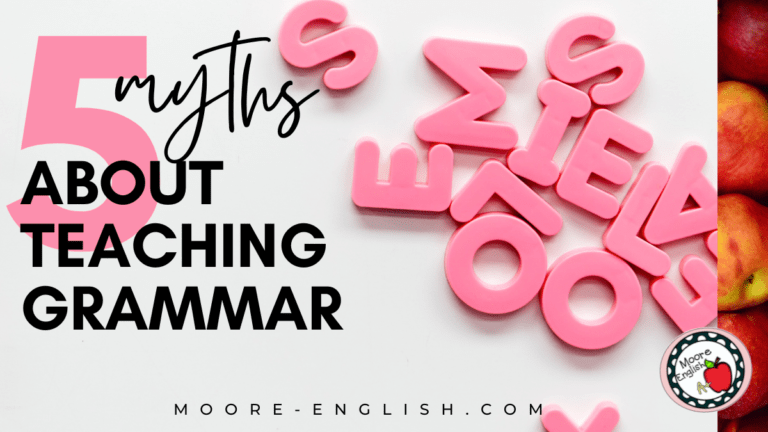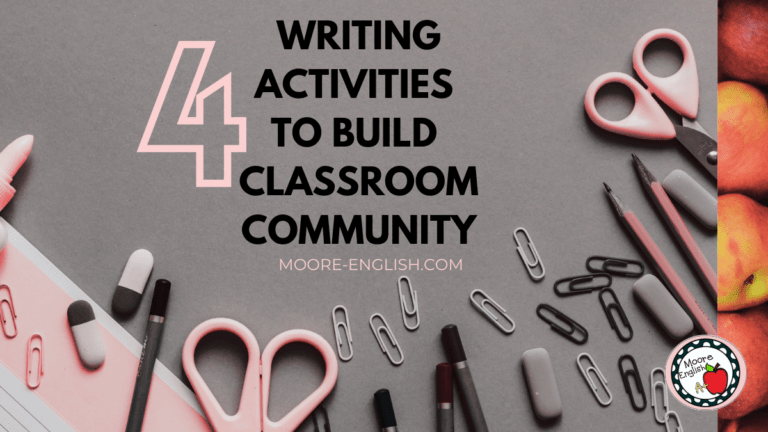Harry Potter’s life changes because of it. Atonement would be an entirely different novel without it. And Jane Austen’s characters would be nowhere without it.
Of course, I’m talking about letters and letter writing.
Letters and letter writing have a long literary history. But they can absolutely be part of teaching secondary ELA. Letter writing can be a great way to teach tone, sentence variety, and word choice. So here are 3 ways to use letter writing in your classroom today!
This post this post may contain affiliate links. Please read the Terms of Use.
Invitations: Formal Letter Writing
Writing invitations may be a forgotten skill. But writing invitations in the classroom can be a great way to emphasize important language arts skills. Here are some reasons invitations are a great idea for the classroom:
- Tone: An invitation has a specific tone–part request, part respect, and part fun and excitement. Striking that perfect balance challenges students to consider how they create tone.
- Word choice and concision: Invitations aren’t very long, so they can provide an opportunity for students to practice concision and precision. Similarly, each word choice also contributes to tone.
- Sentence variety: Creating different types of sentences can be challenging for students, so writing an invitation provides students an authentic purpose for engaging readers.
- Rhetoric: Inviting readers to a special occasion includes using mild rhetoric to persuade readers to attend. Invitations can be a good opportunity for practicing subtler forms of rhetoric like parallelism.
- Visual elements can be an important part of larger projects. Infographics can accompany informative papers. Text features can provide readers key details. And graphics, images, or pictures can also be a way to practice creating mood.
My favorite way to have students practice this kind of letter writing is to have students invite family members, administrators, and other community members to their classroom presentations. Knowing they will have an authentic audience also encourages students to create top-notch presentations.
Thank-You Cards: Letter Writing as Giving Back
I’ve written about the importance of thank-you cards before, and I stand by their value! Here are some ideas for writing thank-you cards in the classroom. Students can thank these groups and individuals:
- Veterans
- Room parents or the PTA
- Classroom donors or school supporters
- Reading buddies or reading buddy teachers
- Previous teachers during Teacher Appreciation Week
- Paraprofessionals, speech therapists, and special educators
- School librarians, nurses, secretaries and other professionals
- Individuals who have supported the classroom by donating their time, providing feedback, or sending encouragement
One of my favorite ways to use thank-you cards in the classroom is as an end-of-the-year activity. Students can send cards to one another for the classroom experience. Or students can write to teachers in other classes, and you can help “deliver” notes.
One of the best things about thank-you cards is that they transfer easily to distance learning. Expressing gratitude is a type of timeless letter writing. And in these challenging times, everyone should practice gratitude (my 2019 word of the year!). In fact, practicing positivity right now is one strategy for finding peace of mind when the world is in pieces.
Unsent Letters: Letter Writing as Anticipatory Set
This type of letter writing is the most unusual. But it might just be the most powerful! There are several ways to use unsent letters, but here’s the basic premise. Students write a letter they never intend to send. Here are some ways to incorporate unsent letters into your classroom:
- Narrative Brainstorming: Brainstorming is tricky stuff. But students can write unsent letters as a modified quick write to get started. This works particularly well when students are writing personal narratives or memoirs. In this exercise, the form of a letter gives students a built-in audience and structure. With this technique, I give students an envelope. If they seal their envelope, I won’t read their letters. But if the envelope is not sealed, I will read and, if asked, reply.
- Characterization: Having students practice writing in the voice of a character can help students with characterization and point of view. For example, having students try to write the letter Daisy receives in The Great Gatsby is a good opportunity for practicing inference.
- Metacognition: At the end of the year, having students write letters to their future selves or to your future students is a great way to take a letter from unsent to sent. This practice helps students think through their learning and reflect metacognitively.
Last Notes
Overall, letter writing is a fun way to incorporate short, organized writing into the classroom. Letter writing helps students practice organization and writing with a clear purpose. Plus, my students think that envelopes are fun! I don’t know what it is, but when I give my students an envelope, they are instantly hooked. The rubrics I use for letter writing are included here. Check them out today!

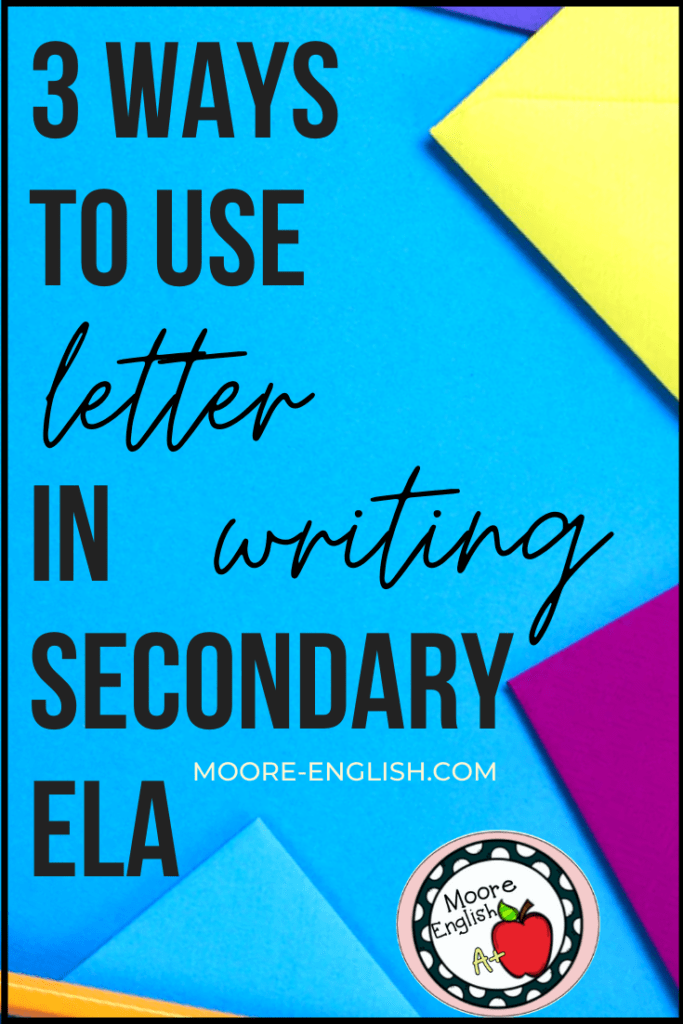
Photo by Joanna Kosinska on Unsplash

